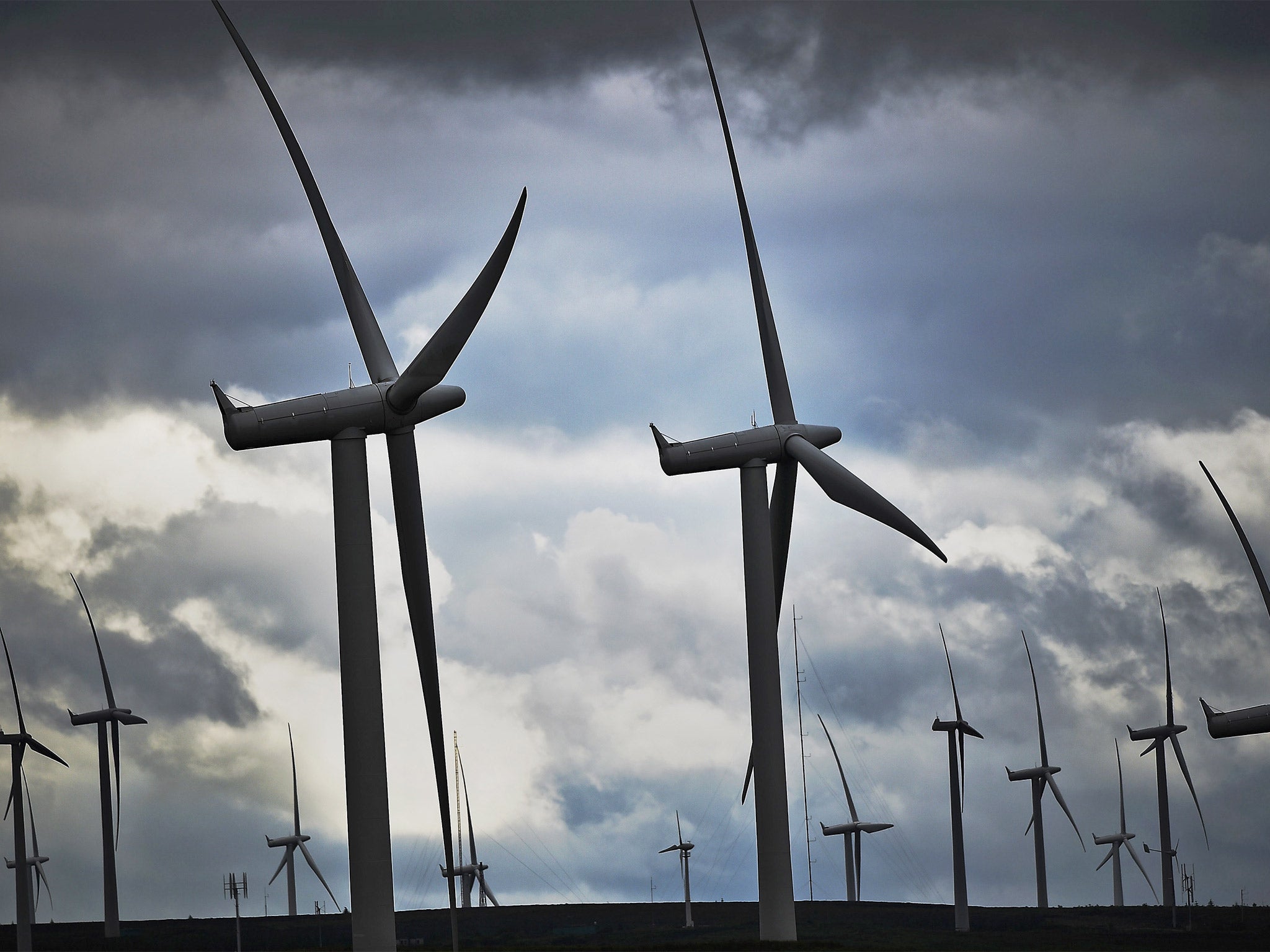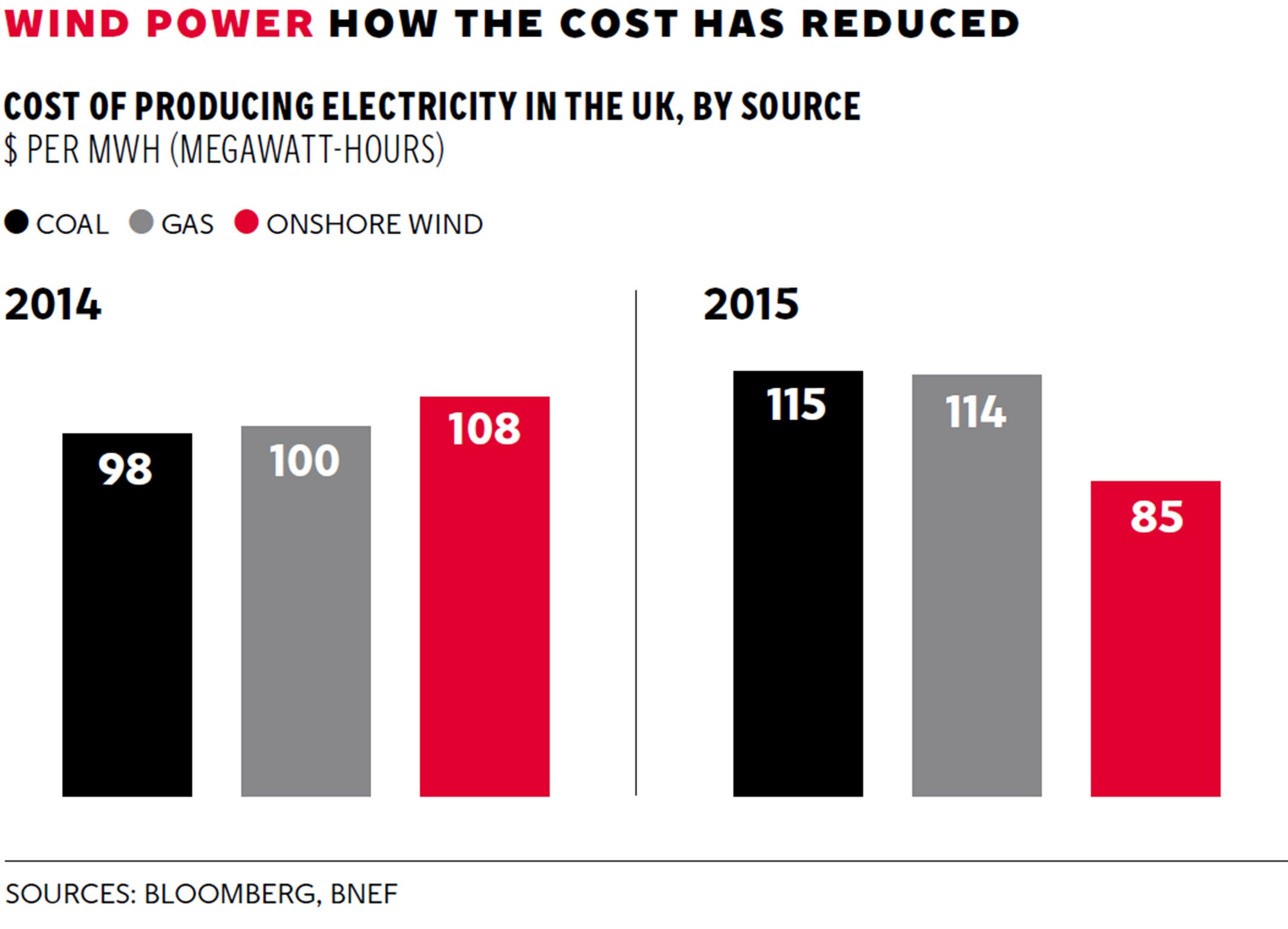Wind power now UK's cheapest source of electricity – but the Government continues to resist onshore turbines
New figures show they not only produce cheaper energy than coal, oil or gas power stations, but also remain far cheaper than offshore turbines

Your support helps us to tell the story
From reproductive rights to climate change to Big Tech, The Independent is on the ground when the story is developing. Whether it's investigating the financials of Elon Musk's pro-Trump PAC or producing our latest documentary, 'The A Word', which shines a light on the American women fighting for reproductive rights, we know how important it is to parse out the facts from the messaging.
At such a critical moment in US history, we need reporters on the ground. Your donation allows us to keep sending journalists to speak to both sides of the story.
The Independent is trusted by Americans across the entire political spectrum. And unlike many other quality news outlets, we choose not to lock Americans out of our reporting and analysis with paywalls. We believe quality journalism should be available to everyone, paid for by those who can afford it.
Your support makes all the difference.Onshore wind energy has become cheaper than electricity from any other source in the UK for the first time, in what could be a landmark moment for renewable energy in Britain.
Yet the Government has been accused of scuppering Britain’s best chance of meeting the country’s ambitious environmental targets through its continued resistance to onshore turbines, despite growing evidence that they are the most affordable option.
However, new figures show they not only produce cheaper energy than coal, oil or gas power stations, but also remain far cheaper than offshore turbines, which the Government is championing.
Onshore wind farms currently produce about 60 per cent of the UK’s wind power output. Although they are set to remain the predominant form of renewable energy in the next few years despite opposition in Westminster – which has stopped subsidies and given the final say on whether a project should go ahead to local residents – supporters of green energy say the country is missing a chance to maximise their potential.
The cost of onshore wind power has fallen from $108 (£70.20) per megawatt hour (mWh) a year ago to $85 today, as they become more efficient and cheaper to build.
Over the same period, coal-fired power stations have seen their costs rocket from nearly $98 mWh to $115 and gas from $100 to $114, after the EU agreed new rules that will greatly increase the amount they must pay for their carbon emissions. Offshore wind costs $175 mWh, according to the research, by Bloomberg New Energy Finance.
There’s still a tendency for the general public to believe that renewables are really expensive
A steep decline in borrowing costs, with bank lending rates hovering around all-time lows, is also much more beneficial for wind farms than for fossil-fuel plants. This is because far more of the cost of renewable energy projects relate to their construction, which is funded by loans.
“There’s still a tendency for the general public to believe that renewables are really expensive, while coal and gas are really cheap,” said Seb Henbest, of Bloomberg, which conducted the research. “This is how it used to be not so long ago, but over the past five years technology costs have come down significantly, along with financing costs.”

Bloomberg added together all the costs associated with each energy source over their expected lifetime, to arrive at an average unit cost of the electricity if they went into development now.
Luke Mills, also of Bloomberg, added: “Onshore wind and solar panels are both now much more competitive against established generation technologies than would have seemed possible only five or 10 years ago.”
But campaigners say the Conservative Government has made it considerably more difficult for new onshore wind farms to be built since it took office. They argue that, while onshore wind may now be the cheapest energy source, it could still benefit from subsidies and point out that nuclear power and fossil-fuel power plants also receive government support.
“There is no technology in the UK system at the moment that doesn’t receive subsidies,” said Jimmy Aldridge, a research fellow for energy and climate change at the IPPR think-tank. “There are new subsidies at the moment to pay for coal, gas and nuclear to compensate for the fact that the business case for those technologies has changed in response to new cheaper renewable technologies.”
The Government has agreed a deal with EDF that would guarantee the Big Six energy provider £92.50 per megawatt hour of electricity it generates, rising with inflation, up to 2061. This amounts to nearly three times the current price and is likely to amount to an effective subsidy of billions of pounds.
Meanwhile, ageing coal, gas and nuclear power generators will be paid an extra £1bn in 2018 alone for guaranteeing to stay open and keep the lights on, Mr Aldridge said.
Friends of the Earth chief executive Craig Bennett said: “If the Government wants to see lots of investment in the cheapest form of low-carbon energy to help us tackle climate change, then the fastest way to do that would be to offer a bit of subsidy to reduce the investment risk.”
He said recent government cuts to solar subsidies would further undermine Britain’s attempts to green its energy supply – along with the prospect of creating a lucrative renewable-energy industry.
“Just when we’re probably five years away from solar really being able to compete with fossil fuels on price, you see the Government pulling the rug from under solar,” he said.
“The point with renewable energy as a whole is that it is getting cheap as it gets to scale and as it becomes ever more successful but for that to happen you need the Government to support it.”
A spokesman for the Department for Energy and Climate Change said: “Government support has driven down the cost of renewable energy significantly, enabling renewables to compete with other technologies… Our priority is now to move towards a low-carbon economy whilst ensuring subsidies are used where they are needed most, to provide the best value for money for hardworking bill payers.”
Wind energy: Dispelling the myths
- Wind turbines kill bats and birds: that is true but these deaths pale into insignificance compared to windows, tall buildings, power lines and cats.
- Wind turbines are intermittent – because the wind doesn’t blow all the time they don’t provide a constant source of power: there is some truth in this, but wind farms generate electricity about 80 to 85 per cent of the time.
- They are noisy: they do make a swooshing sound but improving technology is creating ever-quieter blades.
- They are unsafe: despite scare stories about a turbine blade flying off there are very few cases of this happening.
- They are a blot on the landscape: much of the time this seems like a classic Nimby excuse but there are some cases where wind turbines could ruin the character of a unique area.
Join our commenting forum
Join thought-provoking conversations, follow other Independent readers and see their replies
Comments